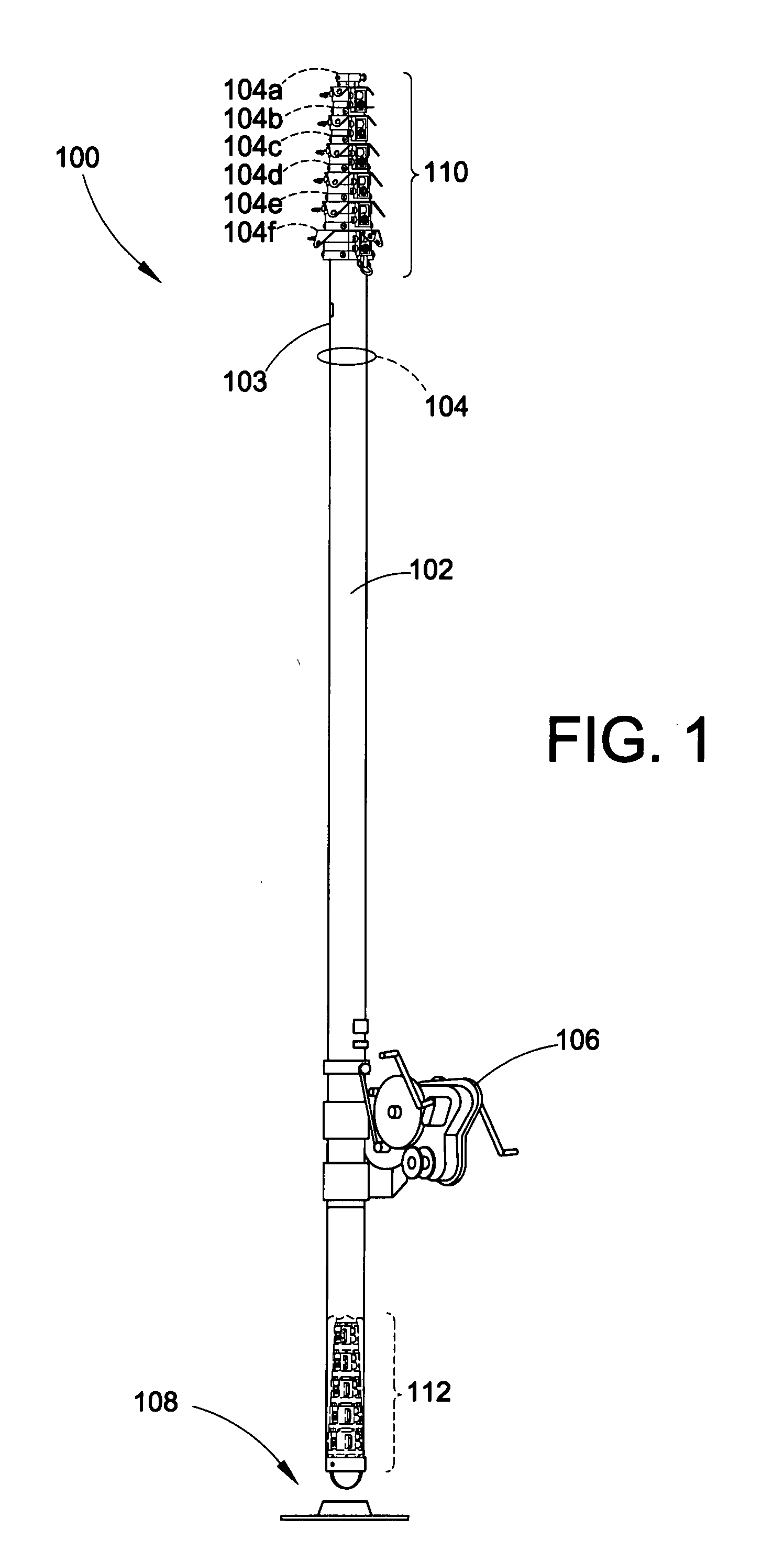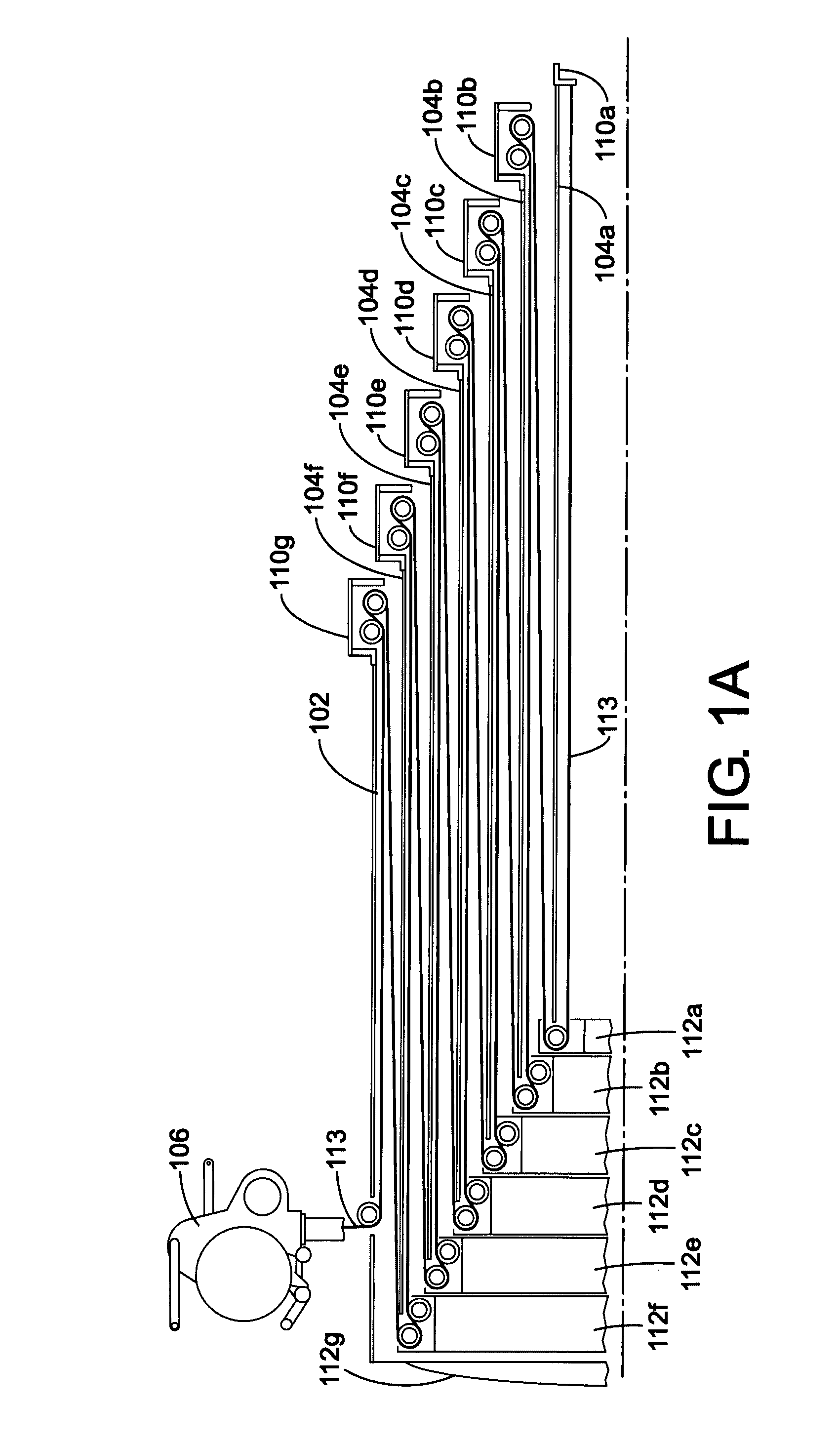Strap driven field mast
a field mast and drive technology, applied in the direction of towers, collapsible antennas, transportation and packaging, etc., can solve the problems of open winch design, prone to accelerated wear-out, and deficient prior art field mast assemblies in a number of ways
- Summary
- Abstract
- Description
- Claims
- Application Information
AI Technical Summary
Problems solved by technology
Method used
Image
Examples
Embodiment Construction
[0027]With reference to FIG. 1, a first embodiment of a telescopic field mast 100 is shown. Generally, the field mast 100 includes an outer body 102, a plurality of nested mast sections 104, a winch assembly 106 and a base 108. The plurality of mast sections 104 may include any number of sections necessary to achieve the height required for a given application. In the present embodiment, a field mast 100 is shown having a total of six (6) mast sections 104a-104f (not including the outer body 102). The first or inner most mast section 104a is typically adapted to carry a particular pay load or associated device (e.g., an antenna, a satellite dish, a vision system, a guidance or positioning system, etc).
[0028]With reference to FIGS. 1 and 1A, the inner most or first mast section 104a is nested within the second mast section 104b. Similarly, the second mast section 104b is nested within the third mast section 104c which in turn is nested within the fourth mast section 104d and so on. L...
PUM
 Login to View More
Login to View More Abstract
Description
Claims
Application Information
 Login to View More
Login to View More - R&D
- Intellectual Property
- Life Sciences
- Materials
- Tech Scout
- Unparalleled Data Quality
- Higher Quality Content
- 60% Fewer Hallucinations
Browse by: Latest US Patents, China's latest patents, Technical Efficacy Thesaurus, Application Domain, Technology Topic, Popular Technical Reports.
© 2025 PatSnap. All rights reserved.Legal|Privacy policy|Modern Slavery Act Transparency Statement|Sitemap|About US| Contact US: help@patsnap.com



